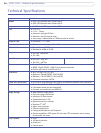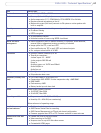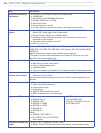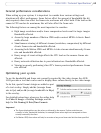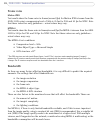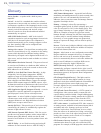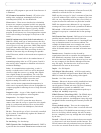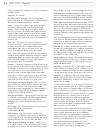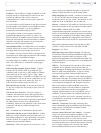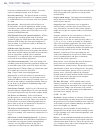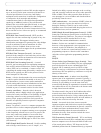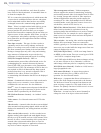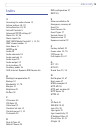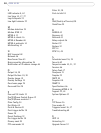
76
AXIS 233D - Glossary
locations to simultaneously access images. A network
camera is sometimes known as an IP camera.
Network connectivity - The physical (wired or wireless)
and logical (protocol) connection of a computer network
or an individual device to a network, such as the Internet
or a LAN.
Network video - Network video (often referred to as
IP-Surveillance for specific applications within security
surveillance and remote monitoring) is a system that gives
users the ability to monitor and record video over an IP
network (LAN/WAN/Internet).
NTSC (National Television System Committee) - NTSC is
an analog color encoding system used in television
systems in Japan, the United States and other parts of the
Americas. NTSC defines the video signal using 525 TV
lines per frame, at a refresh rate equal to 30 frames per
second. See also PAL.
NVR (Network Video Recorder) - A dedicated Network
Video Recorder (NVR) can be used to gather data streams
from remote network cameras and video servers and store
them on a hard disk. An NVR can be a standard
networked PC, or a dedicated video recording hard disk
server with its own software application.
PAL (Phase Alternating Line) - PAL is an analog color
encoding system used in television systems in Europe and
in many other parts of the world. PAL defines the video
signal using 625 TV lines per frame, at a refresh rate equal
to 25 frames per second. See also NTSC.
Ping - Ping is a basic network program used
diagnostically to check the status of a network host or
device. Ping can be used to see if a particular network
address (IP address or host name) is occupied or not, or if
the host at that address is responding normally. Ping can
be run from e.g. the Windows Command prompt or the
command line in Unix.
Pixel (Picture Element) - A pixel is one of the many tiny
dots that make up a digital image. The color and intensity
of each pixel represents a tiny area of the complete image.
PoE (Power over Ethernet) - Power over Ethernet
provides power to a network device via the same cable as
used for the network connection. This is very useful for
IP-Surveillance and remote monitoring applications in
places where it may be too impractical or expensive to
power the device from a power outlet.
PPP (Point-to-Point Protocol) - A protocol that uses a
serial interface for communication between two network
devices. For example, a PC connected by a phone line to a
server.
PPTP (Point-to-Point Tunneling Protocol) - A protocol
(set of communication rules) that allows corporations to
extend their own corporate network through private
“tunnels” over the public Internet. In this way a
corporation can effectively use a WAN (Wide Area
Network) as a large single LAN (Local Area Network). This
kind of interconnection is known as a virtual private
network (VPN).
Pre/post alarm images - The images from immediately
before and after an alarm. These images are stored in a
buffer for later retrieval.
Progressive scan - Progressive scan, as opposed to
interlaced video, scans the entire picture, line by line
every sixteenth of a second. In other words, captured
images are not split into separate fields as in interlaced
scanning.
Computer monitors do not need interlace to show the
picture on the screen, but instead show them
progressively, on one line at a time in perfect order i.e. 1,
2, 3, 4, 5, 6, 7 etc., so there is virtually no “flickering”
effect. In a surveillance application, this can be critical
when viewing detail within a moving image, such as a
person running. A high-quality monitor is required to get
the best from progressive scan. See also Interlacing.
Protocol - A special set of rules governing how two
entities will communicate. Protocols are found at many
levels of communication, and there are hardware
protocols and software protocols.
Proxy server - In an enterprise that uses the Internet, a
proxy server acts as an intermediary between a
workstation user and the Internet. This provides security,
administrative control, and a caching service. Any proxy
server associated with a gateway server, or part of a
gateway server, effectively separates the enterprise
network from the outside network and the local firewall.
It is the firewall server that protects the enterprise
network from outside intrusion.
PTZ (Pan Tilt Zoom) - A PTZ-enabled camera can be
remotely controlled so as to change the view from the
camera. Panning is the movement of the camera along its
horizontal axis, tilting is the movement of the camera
along its vertical axis, and zooming is the adjustment of
the zoom lens to magnify the view.
P-VOP - See VOP.
Resolution - Image resolution is a measure of how much
detail a digital image can hold: the greater the resolution,
the greater the level of detail. Resolution can be specified
as the number of pixel-columns (width) by the number of
pixel-rows (height), e.g. 320x240.
Alternatively, the total number of pixels (usually in
megapixels) in the image can be used. In analog systems
it is also common to use other format designations, such
as CIF, QCIF, 4CIF, etc.
RS-232 - A long-established standard that describes the
physical interface and protocol for low-speed serial data
communication between devices. This is the interface that
e.g. a computer uses to talk to and exchange data with a
modem and other serial devices.



